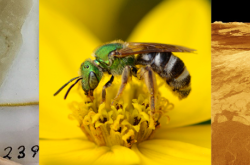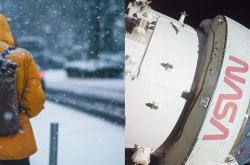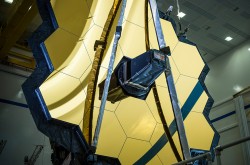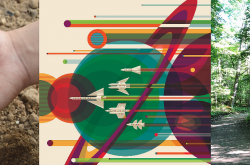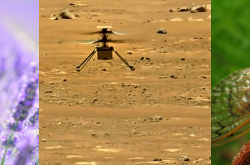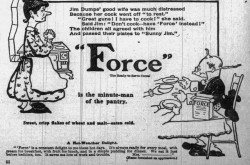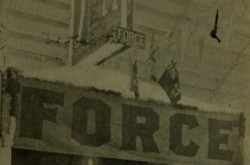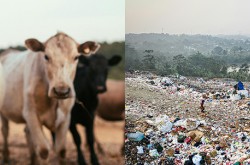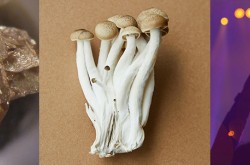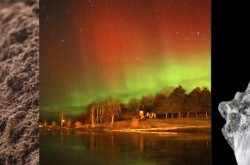3 things you should know about food fraud, how winter tires work and Canadian artificial intelligence headed for the Moon.

Meet Cassandra Marion, Renée-Claude Goulet, and Michelle Campbell Mekarski.
They are Ingenium’s science advisors, providing expert scientific advice on key subjects relating to the Canada Aviation and Space Museum, the Canada Agriculture and Food Museum, and the Canada Science and Technology Museum.
In this colourful monthly blog series, Ingenium’s science advisors offer up quirky nuggets related to their areas of expertise. For the November edition, they explain how you may unknowingly be a victim of food fraud, how Canadian artificial intelligence will soon launch to the Moon, and how winter tires really work.

Educating ourselves on label “red flags” can help us avoid food fraud.
Food Fraud: Imposters on the Grocery Shelves
False advertisements, scams, "knock-offs", counterfeit items – these are things we have to contend with when we're shopping, whether in person or online. Is it any surprise, though, that the importance of being a savvy shopper also extends to our food?
It's pretty easy to tell that a carrot is a carrot, and that mussels are truly mussels. But what about the tuna on your plate of sushi, or the olive oil in your kitchen? With transformed and processed foods, it can be difficult, if not impossible, to tell just by our senses what exactly the item is or contains. Therefore, it's easy to lie about the authenticity of certain foods, and get away with it. This is called food fraud, and all along the supply chain there are people who profit from it.
No one truly knows the exact extent of the problem, but the U.S.-based Consumer Brands Association estimated in a 2010 report that about 10 percent of our food is fraudulent. Though food misrepresentation is not new, it appears to be growing problem given how complex our global food system is becoming, and how difficult it is to reliably trace our food.
The most commonly counterfeited foods are olive oil, honey, dry spices, fish, fruit juices, and organic food products. These are high value items that are easy to mislabel, to tamper with, or to cut with other, cheaper ingredients. This means oils and honey are diluted, fish species are passed off as others, dry ingredients are added as fillers, and some things labeled organic actually aren't.
The impact of food fraud goes beyond the fact that we may sometimes be tricked into paying premium prices for lower quality products. It's also a food safety issue. It can mean that food allergens and other ingredients go undeclared on a label, or harmful and unapproved substances make their way into a product.
Given the importance of the issue for the integrity of our food supply, there are many people at work countering this fraud. Here in Canada, the Canadian Food Inspection Agency works with the food industry and academia to continuously sample and test foods in order to find cases of fraud. They strive to ensure non-complying foods don’t get to consumers, and also monitor imports, to prevent the entry of fraudulent goods.
A big challenge is that food fraudsters constantly adapt their methods to get around the tests that exist to detect food fraud. Part of the solution is developing new chemical analysis techniques that are fast, low-cost, and broad spectrum. This allows the testers to detect any suspicious ingredient, rather than only those that are known. Making the tests more accessible can also have the effects of promoting food traceability and authentication at the different steps of the supply chain.
For now, it’s extremely difficult to prevent food fraud completely, so there are things we can do to protect ourselves. For example, being aware of the foods which are often subject to fraud, checking labels thoroughly and critically, buying from reliable sources, and considering if the price of an item makes sense (if it’s too good to be true…). Now that you are armed with a bit more knowledge, you too can join the battle against food fraud!
Go Further
• Listen to this podcast to learn about the impact of honey fraud on beekeepers
• Consult the CFIA’s Annual Food Fraud Report
By Renée-Claude Goulet
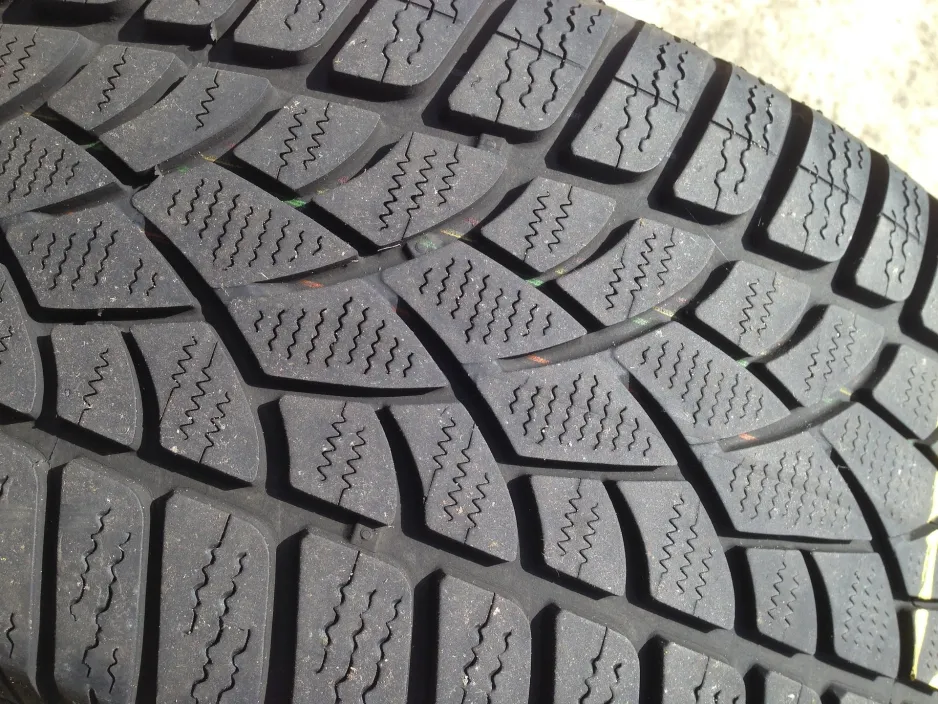
The pattern of a tire’s tread is made of deep grooves, and shallow slits called sipes.
How Winter Tires Work – A Gripping Story
For many people living at higher latitudes, dropping leaves and falling temperatures signal a change: the change to winter tires.
Winter tires are the safest choice for winter driving conditions (i.e., snow, ice, slush, and cold). The material and design of the tires helps them grip the road better which improves acceleration, handling, traction, and braking in winter conditions. But why exactly do they work?
When we drive, the grooves on our tires shift, spread, and wrap themselves around tiny bumps on the road. This increases the contact between the tire and the road, which increases the friction and helps the tire grip the road. The better the grip, the better a driver is able to accelerate, turn, and stop. The material and pattern of tire tread affects this grip, and by changing these features, engineers can design tires to suit different conditions.
Tire material: In summer or all-season tires, the rubber compound is relatively soft and sticky which provides good grip, giving drivers excellent cornering and braking abilities in mild or hot weather. However, when these tires get cold, the rubber compound gets stiff and inflexible. Stiff tires prevent the treads being able to shift and grip the road surface, which makes the tires act more like an ice skate, sliding over the surface. The rubber compound used in winter is specifically designed to remain flexible even when it gets cold.
Tire pattern: The other major difference between tires is the pattern of the tread. If you look at the surface of a tire, you will see large deep grooves, with smaller slits – called sipes – cut into the surface of the rubber.
A summer tire will have thinner and shallower grooves, a straighter groove pattern, and fewer, straighter sipes. A winter tire will have deeper and thicker grooves, a jagged and irregular groove pattern, and lots of wavy sipes.
In winter tires, the deeper, jagged tread encourages the buildup of snow inside the tread. This may seem counterintuitive, but snow sticks to snow better than snow sticks to rubber. So, by encouraging a bit of snow to stick within the tire tread, it actually helps the tire to stick to a snowy surface.
Summer and all-season tires tend to have straight sipes, while winter tires have squiggly sipes. These curvy lines increase the surface area of tire tread in contact with the road. This creates more friction and therefore grip.
Mythbusting!
My tires say ‘all season’. Do I still need winter tires? When tires say all-season, they mean all seasons in a warmer climate. The tire tread and the rubber compound is designed for temperatures above seven degrees Celsius.
Can I use all-weather tires instead of switching between a summer and winter set? Think of all-weather tires as a hybrid between summer and winter tires. The tread design and the rubber compound is an intermediate between summer and winter tires. As you would expect, this makes them not as good as summer tires in warm or wet conditions, and not as good as winter tires in cold, snowy, or icy conditions. They are appropriate for mild climates, but not nearly as safe as winter tires when temperatures are regularly below freezing.
I have all-wheel drive, do I still need winter tires? Ultimately, all of your vehicle’s traction comes from the tires. Some drive systems do better at using the traction that’s available, but if your tires start to slip (zero traction), even an all-wheel drive system can’t fix that. Additionally, all-wheel drive does not affect your ability to stop on slippery roads. Winter tires do.
Two sets of tires is expensive! Though it is more expensive to buy two sets of tires upfront, each set of tires is only being used half the year…which means you will have to replace them half as often! You may have to swap tires more often, but the more frequent tires rotation also helps to extend the life of your tires. In the long run, your cost is similar.
Can I use winter tires all year? The design features that make winter tires work better in winter conditions also make them perform worse in warmer, wetter conditions. If the weather stays consistently above seven degrees Celsius during the summer months, then your safest warm-weather choice is summer or all-season tires.
So, should you buy winter tires? Ultimately, it depends on where you live. If you live in a climate that experiences long stretches of freezing, snowy weather, then winter tires are your safest option.
By Michelle Campbell Mekarski
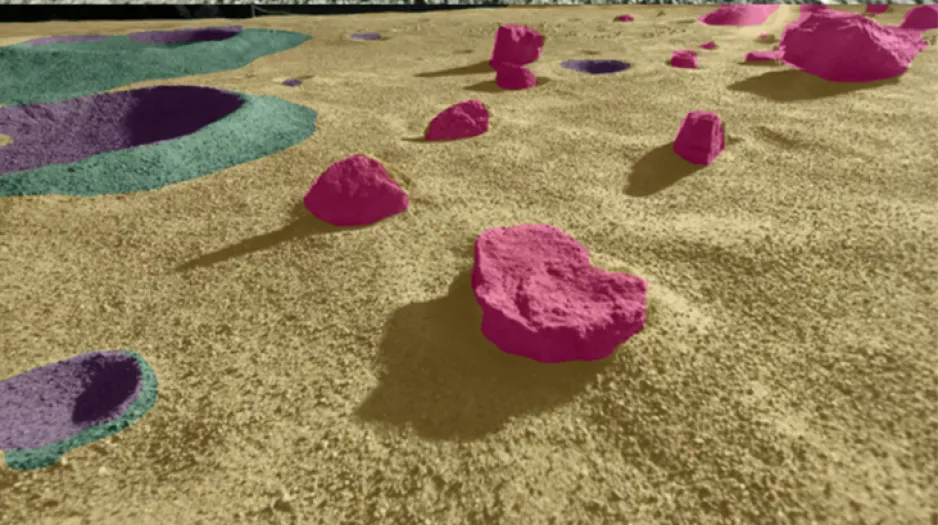
Lunar surface features classified in a simulated lunar terrain using Mission Control Space Services’ Artificial Intelligence network: MoonNet. Different colours represent different features.
Canadian artificial intelligence demonstration to land on the Moon
The Canadian company Mission Control Space Services (Mission Control) has developed MoonNet, an artificial intelligence (AI) demonstration that will launch to the Moon as early as November 28, 2022, enabled by a partnership with the Emirates Lunar Mission, an international micro rover mission to the Moon.
The Emirates Lunar Mission aims to study the lunar surface and rover mobility. It will be led by the Mohammed bin Rashid Space Centre in the United Arab Emirates. The Japanese lunar exploration company ispace will bring the rover to the Moon onboard its first cargo mission using the HAKUTO-R lander which will be launched from Earth to the Moon on a SpaceX Falcon 9 rocket.
MoonNet is a Deep Learning algorithm with the ability to autonomously characterize the Moon’s terrain. Images of lunar terrain collected by a front-facing high-resolution camera on the Rashid micro rover will be sent to Mission Control’s computer onboard the ispace lander. The computer will use Mission Control’s MoonNet software to produce images where each pixel has been classified as one of seven features: lunar sky, rocks/boulders, crater interior, crater rim, spacecraft parts, rover tracks, or regolith (top layer of loose soil and rock on the Moon). The processed image resembles a map where each feature has a representative colour. This information will then be sent via the Deep Space Network back to Earth where mission scientists and engineers across continents will use it to inform science decisions and assist in navigation, using Mission Control’s ground segment software.
“The core of what we’re trying to do,” says Dr. Andrew Macdonald, AI Specialist at Mission Control, “is to prove that this kind of neural network can operate on another body like the Moon. It lets us consider new mission types and capabilities, and new space robotics autonomy and perception.”
Andrew excitedly explains, “[T]his will be the first commercial example of Deep Learning AI on the surface of the Moon!” The AI flight computer was designed, built, and underwent thermal vacuum testing in Canada, in addition to a radiation analysis to ensure it could operate successfully on the lunar surface.
It will take the ispace spacecraft three and a half months to reach the Moon, as it’s following a low energy orbit. Once there, it will land in the equatorial region on the near side of the Moon.
Development of this technology is thanks to support from the Canadian Space Agency’s Capability Demonstration opportunity through their Lunar Exploration Accelerator Program (LEAP). Three Canadian demonstrations were funded through this program.
By Cassandra Marion
Enjoying the Ingenium Channel? Help us improve your experience with a short survey!








